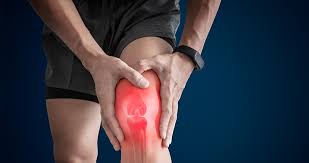Children’s physiology and developmental phases necessitate specific attention and care when it comes to pain alleviation. While it’s normal for parents to want to get their child better soon, it’s important to put safety and efficacy first when choosing treatment options. This thorough guide covers a wide range of safe and efficient pain management techniques for children, from typical minor aches to more severe ailments.
Recognizing Children’s Pain
Children can be in pain for a variety of causes, such as chronic ailments, dental work, traumas, and infections. Since children may not always communicate their suffering properly, it is important to identify the indicators of discomfort in them. Crying, agitation, altered food or sleeping schedules, and avoidance of specific activities are typical symptoms.
Over-the-Counter Drugs:
For children, acetaminophen (Tylenol) is a frequently advised fever reducer and pain reliever. It’s simpler to give to young children because it comes in a variety of formats, such as liquid and chewable tablets. To prevent overdose, the dosage needs to be carefully determined based on the weight and age of the kid.
Ibuprofen, often known as Advil or Motrin, is an additional medication that can be used to treat pain and reduce inflammation in children older than six months. For younger children, it comes in liquid form; for older children, it comes in chewable tablet form. It is important to use caution when administering dosages to children who have certain medical issues.
Topical Analgesics: To reduce pain from minor cuts, burns, insect bites, or teething discomfort, apply creams or ointments directly to the skin that contain substances like lidocaine or benzocaine.
Home and Natural Treatments
Cold and Heat Therapy: Using a warm compress or a cold pack can help reduce pain from sprains, bruising, and joint pain. To prevent direct skin contact with ice packs and to prevent frostbite, be sure to wrap them in a cloth and apply them for a limited amount of time.
Rest and Hydration: Making sure your kids get enough rest and consume a lot of water will help them heal from minor injuries and illnesses. Encouragement of fluids is important since dehydration can worsen headaches and cramping in the muscles.
Herbal Remedies: For older children, some herbal drinks or extracts, including chamomile or peppermint, may help relieve moderate headaches or upset stomachs. Before utilizing herbal medicines, nonetheless, it is imperative to speak with a healthcare professional, particularly for small children.
Methods that are Behavioral and Psychological
Techniques for Distraction: Getting kids involved in enjoyable activities like reading, playing games, or listening to music might help them focus on something other than their pain or discomfort.
Teaching relaxation techniques such as deep breathing or visualization can help older children who are in discomfort due to worry or chronic pain.
Particular Points to Remember
Pain Management for newborns: Because of their age and developmental stage, newborns have few alternatives for pain management. Colic and teething pain can be lessened with methods like soft rocking, hugging, or utilizing teething toys.
Chronic Pain Conditions: Children who suffer from long-term ailments such as sickle cell disease or juvenile arthritis may need to follow customized pain management regimens that include medication and physical therapy.
Safety Measures
Dosage and Administration: Consistently adhere to the directions on prescription labels or from healthcare professionals regarding dosage. To prevent mistakes, measure liquid drugs with the proper equipment.
Avoid Aspirin: Because aspirin can cause Reye’s syndrome, a rare but dangerous condition that can happen when used with viral illnesses, it should never be administered to children or teenagers.
Speak with Your Healthcare Provider: Get quick medical attention if your child’s pain doesn’t go away or gets worse despite home remedies or if you’re not sure what’s causing it.
In summary
Children’s pain management requires a well-rounded strategy that uses safe and efficient techniques based on their age, condition, and kind of pain. Parents may support their child in feeling less discomfort while maintaining their safety and wellbeing by being aware of the many pain management choices available and using them carefully. When in doubt, get advice and recommendations from medical professionals regarding your child’s particular needs.

